Bowed legs in puppies, also known as “bowleggedness” or genu varum, is a common condition that affects many young dogs. A variety of factors, including genetics, malnutrition, injury, or developmental issues, can cause this condition.
Bowed legs can significantly impact a puppy’s mobility and quality of life, making it a concern for pet owners and veterinarians alike. Fortunately, there are several considerations and solutions available to help cure bowed legs in puppies.
We will discuss how to cure bowed legs in puppies. The causes of this condition and provide practical tips and solutions for pet owners to consider. We will also explore various treatment options, including nutritional adjustments, exercise, and surgical plan intervention, to help puppies achieve a healthy and natural leg alignment.
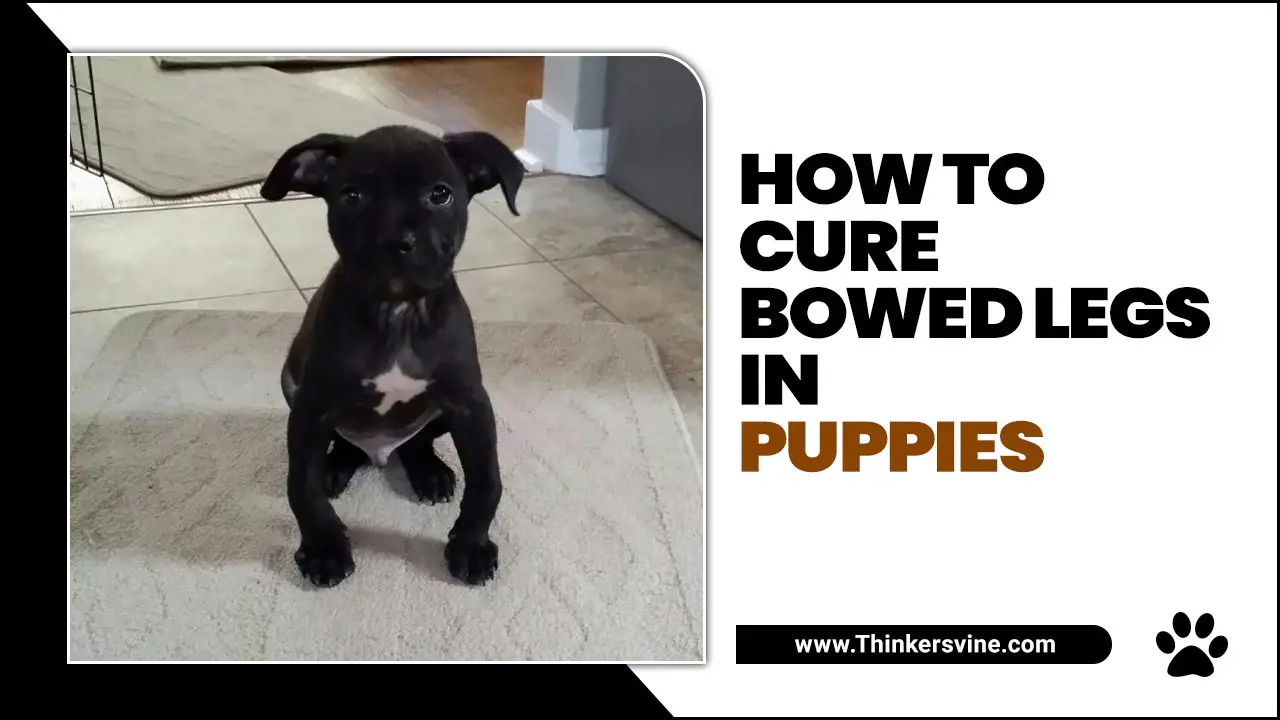
Signs Of Bowed Feet
Some symptoms will appear, but your puppy’s legs will not be deformed at once. It is important to consult with a veterinarian. They can assess the severity of the condition and recommend appropriate treatment options. Treatment for bowed legs in puppies may include physical therapy, splinting or casting, braces, or in some cases, surgery. The earlier the condition is addressed, the better your puppy’s chance for a successful outcome and improved mobility. Signs of bowed legs in puppies can include:
- Abnormal curvature of the legs, causing them to look bent or bowed
- Difficulty walking or running, often appearing clumsy or uncoordinated
- Pain or discomfort when standing or putting weight on the affected legs
- Developmental delays, such as delayed ability to stand or walk properly
What Causes A Puppy’s Bowed Legs?
A variety of factors can cause bowed legs in puppies. Understanding the causes of bowed legs in puppies allows pet owners to take proactive measures to prevent or address this condition. Regular veterinary check-ups, proper nutrition, and a nurturing environment are key factors in ensuring your puppy’s overall health and well-being. Here are some possible reasons behind a puppy’s bowed legs:
- Genetics: In some cases, bowing of the legs can be attributed to genetic factors. Certain dog breeds are more susceptible to this condition due to their genetic makeup. It is important to research your puppy’s breed and consult with a reputable breeder to understand if there is a predisposition to bowed legs.
- Nutritional Deficiencies: A balanced dog food diet plays a crucial role in a puppy’s antebrachial growth deformity and development. Insufficient intake of essential nutrients such as calcium, vitamin D, and phosphorus can lead to skeletal abnormalities, including bowed legs. Providing a well-balanced, high-quality puppy food formulated to meet their nutritional needs can help prevent such deficiencies.
- Rapid Growth: Puppies experience rapid growth during their early months, and if this growth occurs too quickly or unevenly, it can affect the development of their bones and joints. This can result in bowed legs or other orthopedic issues. Ensuring controlled growth through appropriate diet and exercise can help minimize the risk of such conditions.
- Trauma Or Injury: Accidents or injuries during the puppy’s formative stages can cause damage to the bones, resulting in bowed legs. Providing your puppy with a safe and supervised environment is crucial to prevent such incidents and seek immediate veterinary attention if an injury occurs.
How To Cure Bowed Legs In Puppies?
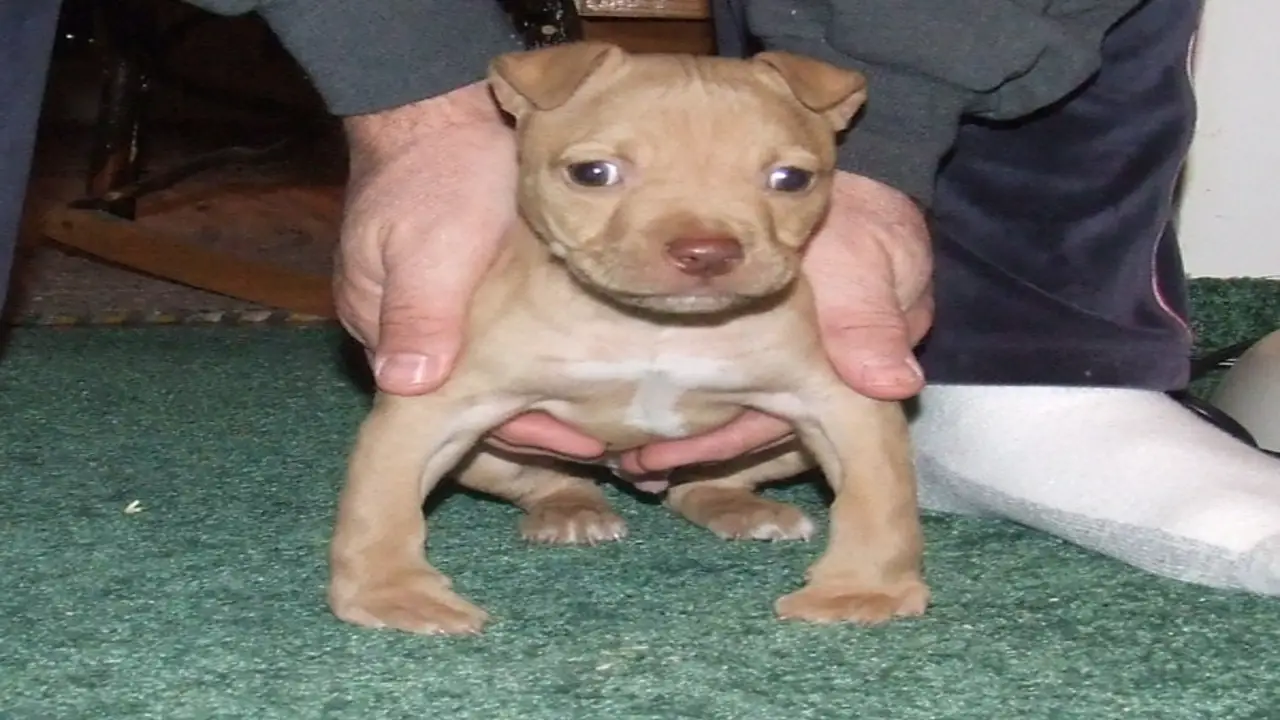
Curing bowed legs in puppies requires careful observation and intervention. Bowed legs, also known as angular limb deformity, can occur in puppies as they grow and develop. It is important to address this issue early on to prevent long-term complications. The first is to consult with a veterinarian, who can assess the severity of the condition and recommend appropriate treatment options.
Treatment may include dietary changes, exercise modifications, or splints or braces. In some cases, surgery may be necessary to correct the deformity. Following the veterinarian’s advice and closely monitoring the puppy’s progress throughout treatment is crucial to ensure a successful outcome. In most cases, surgery is needed to cure bowed legs. However, in addition to surgery, there are some alternative ways for your puppy.
- Diagnosis
- Potential treatment
- Balanced diet
- Surgery
- Limit exercise
Panosteitis In Dogs
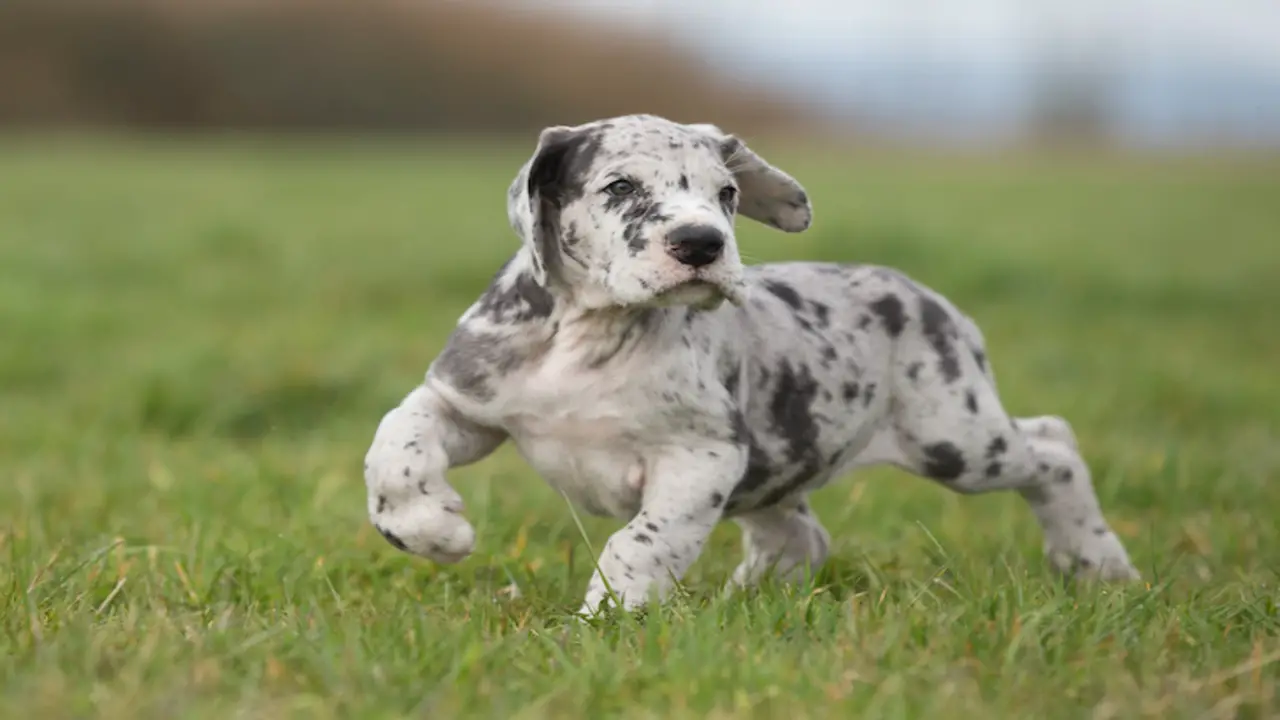
Large breed dogs often have panosteitis, a painful bone ailment that affects their long leg deformed bones between the ages of 5 and 18 months of age. It is permanently cured when the pup outgrows the ailment, which may be painful during flare-ups. Some individuals will have a recurrence later in life.
In affected dogs, the joint incongruity pain between the bones of their legs swell, causing pain and lameness. The area of inflammation is usually the metaphysis (the area between the end of the appendage and the growth plates). The limbs are stiff, hyperextended, and swollen. There may be fever as well as general signs of illness.
Panosteitis In Dogs: Symptoms And Presentation
- Lameness in one or more legs is a defining feature of dog panosteitis.
- This might be a fluctuating lameness in the legs.
- Panosteitis-related lameness develops suddenly and without prior damage.
- When the injured limb is touched or palpated, the dog generally limps noticeably and is in great agony.
Bowed Legs, Knuckling Over In Puppie
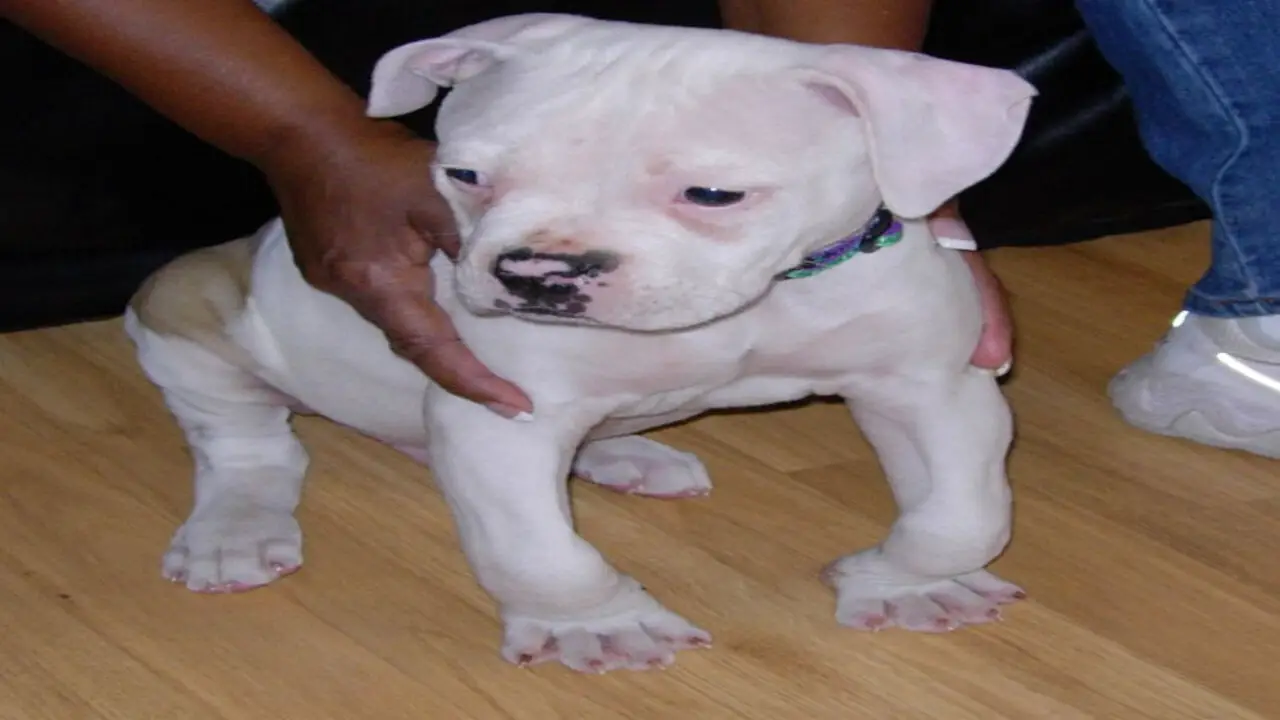
The long bone bows under the force of romping and jumping nonstop all day. The proper Vitamin C/mineral supplement may be handy to address this problem if it is discovered early. The cause of bent legs is that your body develops faster than your diet supports. Here are some common reasons behind bowed legs and knuckling over in a puppy.
1.Nutritional Deficiency
Various factors, including nutritional deficiency, can cause bowed legs and knuckling over in puppies. Proper nutrition is crucial for the healthy development of a puppy’s bones and muscles. A lack of essential nutrients can lead to skeletal abnormalities.
To help cure bowed legs in puppies, it is important to ensure they are receiving a balanced minerals diet that includes all the necessary vitamins, minerals, and proteins. Consult with a veterinarian to determine the specific nutritional needs of your puppy and make any necessary adjustments to their diet.
2.Sore Paw
Bowed legs and knuckling over in puppies can be a cause for concern. As it can affect their mobility and overall well-being. One common issue that can arise from bowed legs is sore paws. When a puppy’s legs are not properly aligned. It can put extra pressure on their paws, leading to discomfort and pain.
To help alleviate this issue, it is important to provide proper support and cushioning for the puppy’s paws. This can be done by using orthotic boots or socks specifically designed for dogs with leg deformities. These boots or socks can help distribute the weight evenly and provide relief to the sore paws.
3.Carpal Flexural Deformity
Carpal flexural deformity, or bowed legs or knuckling over, is a common sign in puppies. Where their front legs appear to be bent or curved. While this condition may be concerning for puppy owners. It is typically a temporary issue that resolves as the puppy grows and develops.
However, there are some steps you can take to help support your puppy’s leg development and minimize the severity of the bowing. This includes providing a balanced diet with appropriate calcium and phosphorus activity levels.
Avoid excess calorie exercise or activities that put a strain on the legs. And consult with a veterinarian for guidance and potential treatment options. With proper amounts of care and monitoring. Most puppies with bowed legs will outgrow this condition and have healthy, straight-legged adult dog lives.
4.Wobbler Syndrome
Bowed legs and knuckling over in puppies can be a symptom of a condition known as Wobbler Syndrome. This condition affects the spinal cord, leading to an unsteady gait and difficulty walking. If you suspect that your puppy may have Wobbler Syndrome.
Consulting with a veterinarian for a proper diagnosis and treatment plan is important. Treatment options may include medication, physical therapy, or in severe cases, surgery. The sooner the condition is diagnosed and treated. The better chance your puppy has for a full recovery and a happy, healthy life.
5.Intervertebral Disc Disease
Intervertebral disc disease is a condition that can cause bowed legs and knuckling over in puppies. It occurs when the discs between the spine’s vertebrae become compressed or herniated, putting pressure on the spinal cord. This can lead to weakness and instability in the Uneven limbs, resulting in bowed legs. Treatment for intervertebral disc disease may include medication to reduce inflammation and pain.
Physical therapy to strengthen the muscles supporting the spine, and surgery to remove or repair the affected discs in some cases. It is important to consult with a veterinarian for an accurate diagnosis and appropriate treatment plan for your puppy’s specific condition.
6. Degenerative Myelopathy
Bowed legs and knuckling over in puppies can be symptoms of a condition called degenerative myelopathy. This condition affects the spinal cord and can cause weakness and coordination issues in the hind limbs. If you notice that your puppy’s legs are bowed or they are experiencing difficulty walking. Consulting with a veterinarian for a proper diagnosis and treatment plan is important. Treatment options may include physical therapy, medication, or surgery, depending on the severity of the condition. With proper care and management, many puppies with bowed legs can lead happy and active lives.
Dog With Angular Deformity
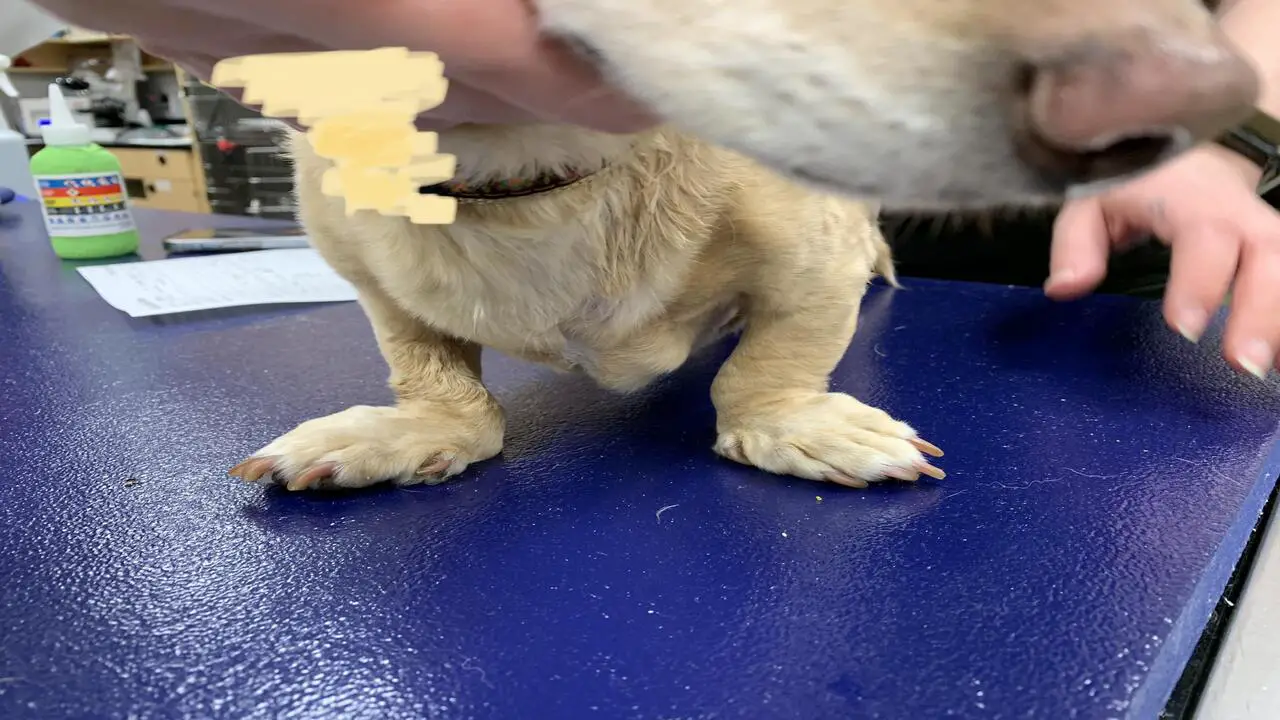
An unusual twist or bend in a limb that throws off the normal alignment of the bones and joints is popular as an angular limb malformation. An unusual twist or bend in a limb that throws off the normal alignment of the bones and joints is popular as an angular limb malformation.
One of the three most common angular limb anomalies in dogs, one of the paired bones of the forearm, is premature closure of the distal (lower) physic (growth plate). The most frequent cause of angular limb deformity is when development between adjacent bones does not occur simultaneously. One bone will cease developing early and will operate in such a manner as to cause the bone that is still developing to twist and bend.
Clinical Symptoms And How To Identify In A Dog?
Common clinical signs of angular limb deformity in dogs include lameness, difficulty standing or walking, and an outward twisting of the legs. The affected leg may appear bent, bowed, and shorter than the other legs. It is important to consult with a veterinarian for an accurate diagnosis.
A physical examination of your dog may be necessary to confirm an angular limb deformity. X-rays can also help to confirm the diagnosis and may provide insight into the severity of the condition.
Distortion Of The Dog’s Front Legs
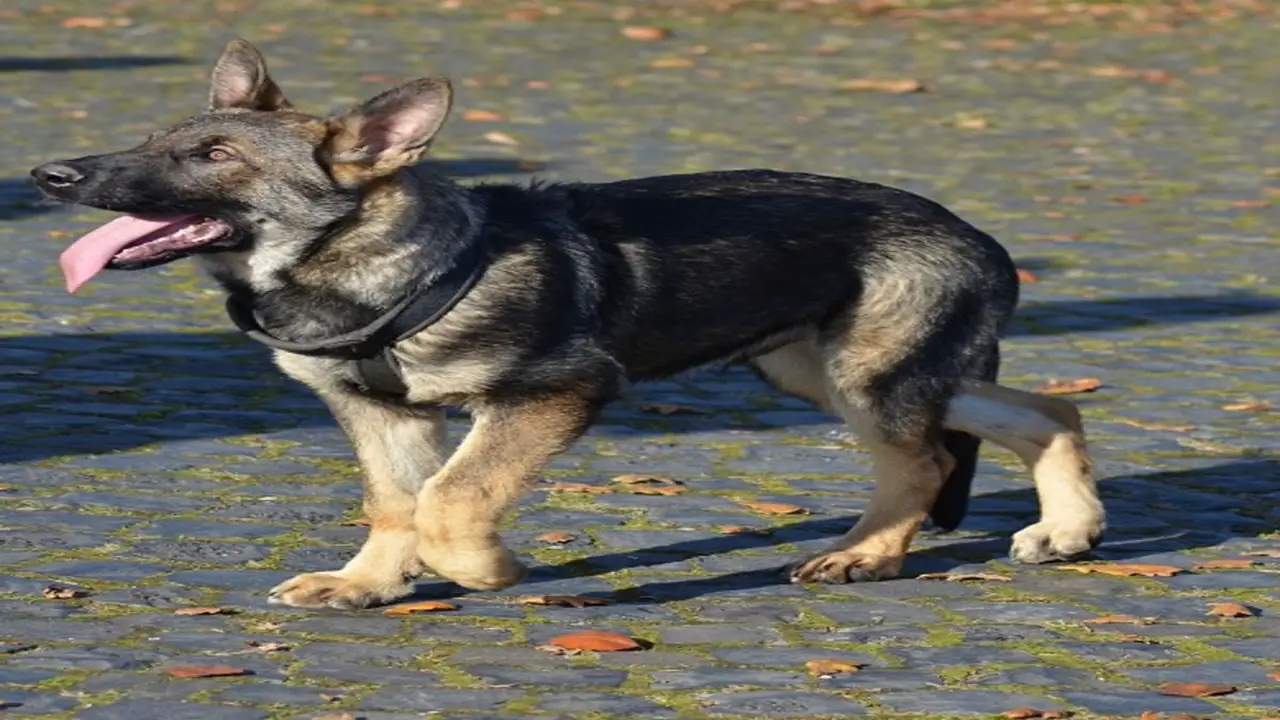
Distortion of a puppy’s front legs, commonly known as bowed legs, can concern pet insurance owners. Bowed legs occur when the bones in the front legs curve outward instead of being straight. Various factors, such as genetic mutation or nutritional deficiencies, can cause this condition. If your puppy has bowed legs, it is important to consult with a veterinarian for an accurate diagnosis and appropriate treatment plan.
Treatment options may include dietary changes, supplements, or physical therapy exercises to help correct the alignment of the bones and promote proper Abnormal growth. With proper care and attention, many puppies with bowed hind legs can overcome this condition and go on to live happy and healthy lives.
Causes Of Distortion Of The Dog’s Front Legs
There are several potential causes of distortion in a dog’s front legs. If you notice any signs of leg distortion in your dog, it is important to consult with a veterinarian for a proper diagnosis and treatment plan. Some common factors include:
- Developmental Issues: Certain breed standards may be more prone to developmental issues that can lead to leg distortion, such as hip dysplasia or elbow dysplasia.
- Trauma: Traumatic injuries, such as fractures or dislocations, can cause the front legs of dogs to become distorted.
- Genetic Conditions: Some genetic conditions, like osteochondrodysplasia or luxating patella, can contribute to leg distortion.
- Nutritional Deficiencies: An improper diet lacking essential nutrients can affect the growth stage and development of a dog’s bones and joints.
- Overexertion Or Overuse: Excessive exercise or repetitive motion can put a strain on a dog’s legs and potentially lead to distortion.
- Aging And Arthritis: As dogs age, they may develop arthritis or other degenerative conditions that can cause leg distortion.
Symptoms Of Distortion Of The Dog’s Front Legs
If you notice any of these symptoms in your puppy, it is important to consult with a veterinarian as soon as possible. They can assess the severity of the condition and recommend appropriate treatment options. In some cases, surgery may be necessary to correct the bowed legs and improve your puppy’s mobility and quality of life.
However, early intervention and proper care can greatly increase the chances of successful treatment and a happy, healthy pup. Distortion of the Dog’s Front Legs:
- Visible bowing or curvature of the front legs
- Difficulty walking or running
- Limping or favoring one leg over the other
- Pain or discomfort when standing or moving
Conclusion
Knowing how to cure bowed legs in puppies can bring optimism because these adorable little creatures have a chance to grow up strong and healthy, free from any physical injury limitations. By acquiring the knowledge and skills to address this condition, you can improve the well-being and quality of life for these puppies, giving them a brighter future filled with joy and vitality.
Consulting with a veterinarian and following a treatment plan that includes exercise, and nutrition. And potentially physical therapy can help straighten out your puppy’s legs and improve their overall health and mobility. Always monitor your puppy’s progress and seek professional help if needed. Your puppy can overcome this condition with patience and dedication and live a happy and healthy life.
FAQ:
[rank_math_rich_snippet id=”s-2365e90a-c16b-46fc-aa27-1b195d55d190″]